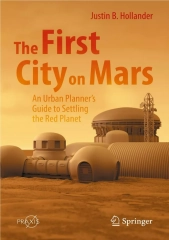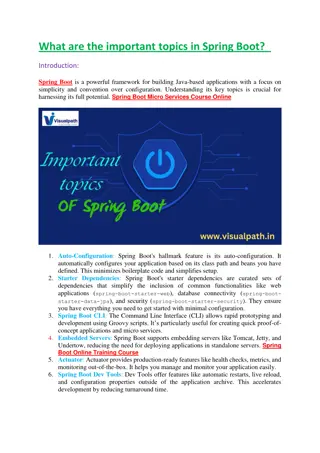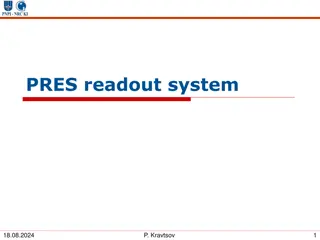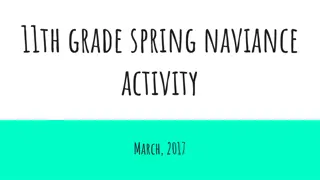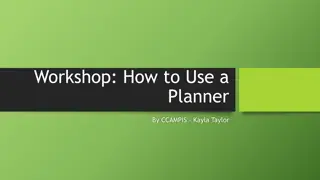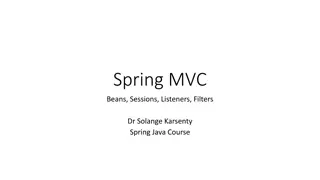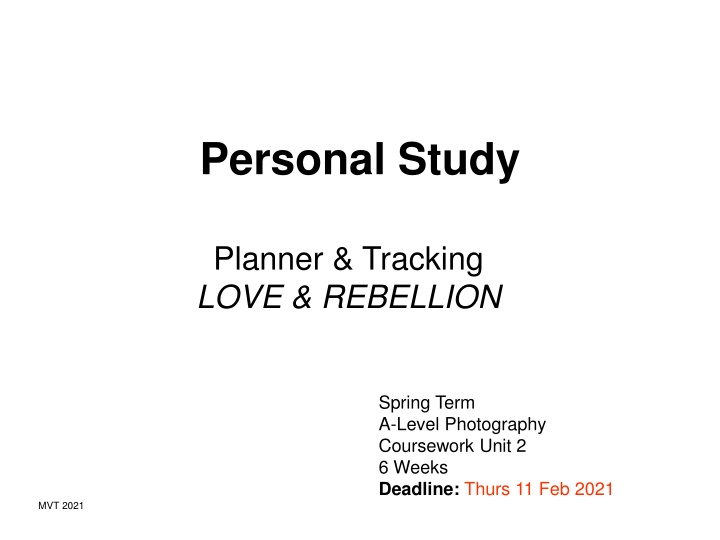
A-Level Photography Coursework Unit: Personal Study on LOVE & REBELLION
Explore the A-Level Photography Coursework Unit 2.6 focusing on the Personal Study aspect of LOVE & REBELLION. Learn about the critical investigation, written essay, and lens-based body of work required for this project. Discover how to develop your own emerging practice as a student of photography through research, analysis, and creative expression.
Download Presentation

Please find below an Image/Link to download the presentation.
The content on the website is provided AS IS for your information and personal use only. It may not be sold, licensed, or shared on other websites without obtaining consent from the author. If you encounter any issues during the download, it is possible that the publisher has removed the file from their server.
You are allowed to download the files provided on this website for personal or commercial use, subject to the condition that they are used lawfully. All files are the property of their respective owners.
The content on the website is provided AS IS for your information and personal use only. It may not be sold, licensed, or shared on other websites without obtaining consent from the author.
E N D
Presentation Transcript
Personal Study Planner & Tracking LOVE & REBELLION Spring Term A-Level Photography Coursework Unit 2 6 Weeks Deadline: Thurs 11 Feb 2021 MVT 2021
A-Level Coursework The A-level coursework consist of two modules, Personal Investigation (worth 72 marks) and Personal Study (essay worth 18 marks) which are interlinked and informed by each other All the work that you produced (both coursework and exam) in Yr 12 also contributes towards A-Level coursework and overall equate to 60% of the total marks. The Personal Study essay account for 12%. The last week before H-Term 8-10 Feb is a Mock Exam and will count as final DEADLINE. On Thursday 11 Feb we will handout Exam paper and begin work on the final component, Externally Set Assignment (Exam) that accounts for the remaining 40% of the combined A-level Photography marks
What is a Personal Study? The aim of this unit is to critically investigate, question and challenge a particular style, area or work by artists/ photographer(s) which will inform and develop your own emerging practice as a student of photography. The unit is designed to be an extension of your practical work in your Personal Investigation module where the practical informs and develops the theoretical elements and vice versa of your ongoing project. Your Personal Study is a written and illustrated dissertation, including a written essay (2000 words) and a lens-based body of work (either stills photography or moving image) with a number of final outcomes produced from your Personal Investigation unit. This year you have a choice to make either a film (3-5mins) or a photo book, either online using Blurb or by hand using traditional book binding techniques, which you design to include both your essay and a final selection and sequence of your photographs produced as a response to your chosen theme(s) of LOVE & REBELLION. In addition, you are expecting to produce an appropriate amount of blogposts that demonstrates your ability to research, analysis, plan, record, experiment, present and evaluate.
What it says in the syllabus (Edexcel) Essential that students build on their prior knowledge and experience developed during the course. Select artists work, methods and art movements appropriate to your previous coursework work as a suitable basis for your study. Investigate a wide range of work and sources. Develop your written dissertation in the light of your chosen focus from the practical part of previous coursework and projects. Establish coherent and sustainable links between your own practical work with that of historical and contemporary reference. Be aware of some of the methods employed by critics and historians within the history of art and photography. Demonstrate a sound understanding of your chosen area of study with appropriate use of critical vocabulary. Show evidence for an ongoing critical and analytical review of your investigation both your written essay and own practical work in response to research and analysis. Develop a personal and critical enquiry. Culminate in an illustrated written presentation.
Quotation and Harvard System of Referencing Use quotes to support or disprove your argument Use quotes to show evidence of reading Take notes when you re reading key words, concepts, passages etc. Write down page number, author, year, title, publisher, place of publication so you can list source in a bibliography Use Harvard System of Referencing see Powerpoint: Harvard System of Referencing for further details. For further help of how to construct your essay see Powerpoint: Personal Study + Essay structure
Planner 6 weeks PHOTOBOOK/ FILM & ESSAY WK 19 : 25 31 Jan Research: WK 18: 18 24 Jan Research: WK 16: 4 10 Jan Research: WK 17: 11 17 Jan Research: Analysis: Analysis: Analysis: Analysis: Planning: Planning: Planning: Planning: Recording: Recording: Recording: Recording: Experimenting: Experimenting: Experimenting: Experimenting: Evaluating: Evaluating: Evaluating: Evaluating: Presenting: DEADLINE: Mon 1 FEB Presenting: Presenting: Presenting: WK 22: 13 21 FebH-TERM Research: WK 20: 1 7 Feb Research: WK 21 : 8 12 Feb Mock Exam Research: WK 23: 22 28 Feb Research: Analysis: Analysis: Analysis: Analysis: Planning: Planning: Planning: Planning: Recording: Recording: Recording: Recording: Experimenting: Experimenting: Experimenting: Experimenting: Evaluating: Evaluating: Evaluating: Evaluating: Presenting: Presenting: DEADLINE: Last day of your Mock Exam Presenting: READ Exam Paper and find inspirations Presenting: EXAM PREP: Develop Ideas
TRACKING SHEET: SPRING TERM - DEADLINE MOCK EXAM 5 - 11 FEB Slides to improve: Actions to take Complete by: Week 16: 4 10 Jan Essay introduction: Academic study skills Contextual Study: Decoding Photography Academic Sources Research and identify 3-5 literary sources from a variety of media such as books, journal/magazines, internet, Youtube/video . Begin to read essay, texts and interviews with your chosen artists as well as commentary from critics, historians and others. It s important that you show evidence of reading and draw upon different pints of view not only your own. Take notes when you re reading key words, concepts, passages Write down page number, author, year, title, publisher, place of publication so you can list source in a bibliography Bibliography: List all the sources that you use Quotation and Referencing: Use quotes to support or disprove your argument Use quotes to show evidence of reading Use Harvard System of Referencing see Powerpoint Essay Question Think of a hypothesis and list possible essay questions Here is a list of possible questions to investigate that may help you. Essay Plan Make a plan that lists what you are going to write about in each paragraph essay structure. Essay introduction Write a 45 mins draft in lesson Contextual Studies: Decoding Photography Select one of the questions listed Read text in detail, make notes and identify 3 quotes Select one image from examples mentioned in text and apply your own interpretation of the photograph by applying theory and critical thinking Incorporate the 3 quotes above into your interpretation of the image and make sure you comment on the quotes.
TRACKING SHEET: SPRING TERM - DEADLINE MOCK EXAM 5 - 11 FEB Slides to improve: Actions to take Complete by: Week 17: 11 17 Jan Essay: write paragraph 1 Photobook: Editing > Experimenting > Evaluating Essay: Lesson time (Wed) Complete Paragraph 1 and upload to the blog no later than Mon 18 Jan. PHOTOBOOK: Lesson time (Mon, Tue, Thurs & Fri) Bring images from new photo-shoots to lessons and follow these instructions Save shoots in folder and import into Lightroom Organisation: Create a new Collection from each new shoot inside Collection Set: PHOTOBOOK Editing: select 8-12 images from each shoot. Experimenting: Adjust images in Develop, both as Colour and B&W images appropriate to your intentions Export images as JPGS (1000 pixels) and save in a folder: BLOG Create a Blogpost with edited images and an evaluation; explaining what you focused on in each shoot and how you intend to develop your next photoshoot. Make references to artists references, previous work, experiments, inspiration etc. Prep for photobook design: Make a rough selection of your 40-50 best pictures from all shoots. Make sure you have adjusted and standardised all the pictures in terms of exposure, colour balance. Further experimentation: Export same set of images from Lightroom as TIFF (4000 pixels) Experimentation: demonstrate further creativity using Photoshop to make composite/ montage/ typology/ grids/ diptych/triptych, text/ typology etc appropriate to your intentions Design: Begin to explore different layout options using Indesign and make a new zine/book. Set up new document as A5 page sizes. This is trying out ideas before you begin designing photobook. Make sure you annotate process and techniques used and evaluate each experiment
TRACKING SHEET: SPRING TERM - DEADLINE MOCK EXAM 5 - 11 FEB Slides to improve: Actions to take Complete by: Week 17: 11 17 Jan Essay: write paragraph 1 Film: Editing > Experimenting > Evaluating Essay: Lesson time (Wed) Complete Paragraph 1 and upload to the blog no later than Mon 18 Jan RECORDING: Produce a number of photographic response to your Personal Study and bring footage from video/ audio recordings to lessons: EDITING: Save media in folder on local V:Data Drive Organisation: Create a new project in Premiere Editing: begin editing video/ audio clips on the timeline Adjusting: recordings in Colour / B&W appropriate to your intentions. EXPERIMENTING: Video: experimenting with sequencing using relevant transitions and effects Sound: consider how audio can add depth to your film, such as ambient sound, sound fx, voice-over, interview, musical score etc. Title and credits: Consider typography/ graphics/ styles etc. For more creative possibilities make title page in Photoshop (format: 1280 x 720 pixels) and import as a Psd file into your project folder on V-Data drive EVALUATING: Write an evaluation on the blog that reflects on your artistic intentions, film-editing process and collaboration. Include screen-prints from Premiere and a few behind the scenes images of the shooting/ production for further annotation. Comment on the following: How successful was your photoshoot and experimentation? What references did you make to artists references? comment on technical, visual, contextual, conceptual? How are you going to develop your project from here? comment on research, planning, recording, experimenting. What are you going to do next? what, why, how, when, where?
TRACKING SHEET: SPRING TERM - DEADLINE MOCK EXAM 5 - 11 FEB Slides to improve: Actions to take Complete by: Week 18: 18 - 24 Jan: Essay: Paragraph 2 + 3 Photobook: Deconstruct narrative, editing & design Essay: Lesson time (Wed) Complete Paragraph 2 & 3 and upload to the blog no later than Mon 25 Jan. Photobook: Lesson time (Mon, Tue, Thurs & Fri) Read and consider theories around how narrative can be constructed and other aspects of photobook making. Read key texts by Jorg Colberg, Colin Pantall and Lewis Bush. Research a photo-book and describe the story it is communicating with reference to subject-matter, genre and approach to image- making. Who is the photographer? Why did he/she make it? (intentions/ reasons) Who is it for? (audience) How was it received? (any press, reviews, awards, legacy etc.) Deconstruct the narrative, concept and design of the book such as: book in hand (how does it feel?), paper and ink, format, size and orientation, design and layout, rhythm and sequencing, structure and narrative, title and typography, images and text. Apply theory above in your analysis Write a book specification and describe in detail what your book will be about in terms of narrative, concept and design with reference to the same elements of bookmaking as above. Produce a mood-board of design ideas for inspiration. Look at BLURB online book making website, photo books from photographers or see previous books produced by Hautlieu students on the table in class.
TRACKING SHEET: SPRING TERM - DEADLINE MOCK EXAM 5 - 11 FEB Slides to improve: Actions to take Complete by: Week 18: 18 - 24 Jan: Essay: Paragraph 2 + 3 Film: deconstruct narrative, editing & direction Essay: Lesson time (Wed) Complete Paragraph 2 & 3 and upload to the blog no later than Mon 25 Jan. Film: Lesson time (Mon, Tue, Thurs & Fri) Study Dr McKinlay's blog on Narrative in Cinema and The Language of Moving Image which look more specifically at some of the recognised conventions and key terminology associated with moving image (film, TV, adverts, animations, installations and other moving image products) Research a film and describe its story - including subject-matter, genre and style etc. Who is the film director? Why did he/she make it? (intentions/ reasons) Who is it for? (audience) How was it received? (any press, awards, legacy etc.) Deconstruct the film s narrative, editing and directing, such as; scenes, action, shot sizes, camera angles and mise-en-scene (the arrangement of the scenery in front of the camera) from location, props, people, lighting, sound etc. .
TRACKING SHEET: SPRING TERM - DEADLINE MOCK EXAM 5 - 11 FEB Slides to improve: Actions to take Complete by: Week: 19-20 -21: 25 Jan 11 Feb MOCK EXAM 3 days (15 hrs) Mon 5 Thurs 11 Feb Design your Photobook & Complete Essay Essay: Lesson time (Wed) Complete conclusion, bibliography, proof read and hand in draft essay. no later than Mon 1 FEB. Photobook: Lesson time (Mon, Tue, Thurs & Fri) Using Lightroom make a rough selection of your 40-50 best pictures from all shoots. Make sure you have adjusted and standardised all the pictures in terms of exposure, colour balance/ B&W, contrast/brightness etc. Decide on format (landscape, portrait) size and style of your photo- book. Begin to design your photo book, considering carefully, narrative, sequencing, page spreads, juxtaposition, image size, text pages, empty pages, use of archival material etc. At the end of your photo book, add your illustrated essay including title, any captions (if needed), bibliography, illustrations of artists work (incl data) and images of your own responses. Think carefully about font type, size and weighting. Produce screen prints of layout ideas as you progress and add to Blog for further annotation, commenting on page layout/ narrative/ sequencing/ juxtaposition of pictures. Design at least 3 newspaper spreads, showing a variety of layouts such as full bleed, juxtaposition, montage and sequence. Select 3 newspaper spreads and a further 5-6 photographs as final outcomes and evaluate explaining in some detail how well you realised your intentions and reflect on what you have learned. Make sure all blog posts are finished including, research, analysis, experimentation, annotation and an evaluation of final outcomes. DEADLINE: END OF YOUR LAST DAY OF MOCK EXAM
TRACKING SHEET: SPRING TERM - DEADLINE MOCK EXAM 5 - 11 FEB Slides to improve: Actions to take Complete by: Week: 19-20 -21: 25 Jan 11 Feb MOCK EXAM 3 days (15 hrs) Mon 5 Thurs 11 Feb Edit your Film & Complete Essay Essay: Lesson time (Wed) Complete conclusion, bibliography, proof read and hand in draft essay no later than Mon 1 FEB. Film: Lesson time (Mon, Tue, Thurs & Fri) STORYBOARDING: Re-evaluate your own film s narrative and storyboard including details of individual scenes, action, shot sizes, camera angles and mise-en-scene (the arrangement of the scenery in front of the camera) from location, props, people, lighting, sound etc. EDITING: Save footage in folder on local V:Data Drive Organisation: Create a new project in Premiere Edit video/ audio clips on the timeline Adjust recordings in Colour / B&W appropriate to your intentions Video: experimenting with sequencing using transitions and effects Sound: consider how audio can add depth to your film, such as ambient sound, sound fx, voice-over, interview, musical score etc. Title and credits: Consider typography/ graphics/ styles etc. For more creative possibilities make title page in Photoshop (format: 1280 x 720 pixels) and import as a Psd file into your project folder on V-Data drive Produce screen prints of your editing prcess as you progress and add to Blog for further annotation, commenting on how you construct narrative through editing. EVALUATING: How successful was your photoshoot and experimentation? What references did you make to artists references? comment on technical, visual, contextual, conceptual? How are you going to develop your project from here? comment on research, planning, recording, experimenting. What are you going to do next? what, why, how, when, where?
TRACKING SHEET: SPRING TERM - DEADLINE MOCK EXAM 5 - 11 FEB Slides to improve: Actions to take Complete by: Week: 19-20 -21: 25 Jan 11 Feb MOCK EXAM 3 days (15 hrs) Mon 5 Thurs 11 Feb Edit your Film & Complete Essay Make sure all blog posts are finished including, research, analysis, experimentation, annotation and an evaluation of final outcomes. Design at least 3 newspaper spreads, showing a variety of layouts such as full bleed, juxtaposition, montage and sequence. Use the technique of selecting key frames from the timeline in Premier and presenting them as still-images. Select 3 newspaper spreads and a further set of 5-6 photographs as final outcomes and evaluate explaining in some detail how well you realised your intentions and reflect on what you learned in your Personal Study. Save final outcomes in our PRINT folder by 15:00 end of your Mock exam in a high-resolution (4000 pixels on the long edge.) DEADLINE: END OF YOUR LAST DAY OF MOCK EXAM

